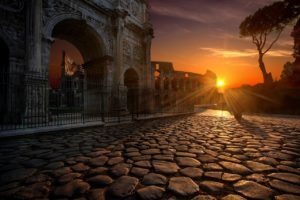
AMERICAN ASSOCIATION FOR THE ADVANCEMENT OF SCIENCE—All roads may lead to Rome, and in ancient times, a great many European genetic lineages did too, according to a new study*. Its results, perhaps the most detailed analysis of changing genetic variation patterns in the region to date, reveal a dynamic population history from the Mesolithic (~10,000 BCE) into modern times, and spanning the rise and fall of the Roman Empire. At its height, the ancient Roman Empire sprawled across three continents, encompassing the entirety of the Mediterranean and the lives of tens of millions across Europe, the Near East and North Africa. The size of the city at its center, Rome – the first to reach more than one million residents in the ancient world – would remain unrivaled in Europe until the dawn of the industrial revolution nearly 1,500 years later. Even long before the rise of Imperial Rome, the region was an important cultural crossroads between Europe and the Mediterranean. However, while Rome and central Italy’s antiquity is well-documented in a rich archaeological and historical record, little is known about the region’s genetic history. Margaret Antonio and colleagues present a new genetic record, built from genome data of 127 ancient individuals from 29 archaeological sites in and around Rome, spanning nearly 12,000 years of Roman prehistory and history. Antonio et al. revealed two major prehistoric ancestry shifts – one occurring as Neolithic farmers replaced Mesolithic hunter-gathers roughly 7,000 years ago, and another during the Bronze age likely coinciding with increased trade and interaction with populations from across the Mediterranean. The results suggest that by Rome’s founding, the genetics of ancient central Italy were much the same as that seen in modern populations. However, throughout the historic period (the past 3,000 years), genetic ancestry was greatly diverse, with genetic contributions from individuals from across the Near East, Europe and North Africa, and changes largely reflected major Roman historical events, the authors say.
____________________________

Ancient Rome’s population was genetically diverse, say researchers. Pictured here is the Arch of Constantine, by Julius Silver (Pixabay).
____________________________
Article Source: AMERICAN ASSOCIATION FOR THE ADVANCEMENT OF SCIENCE news release
*”Ancient Rome: A genetic crossroads of Europe and the Mediterranean,” by M.L. Antonio, et al.
____________________________
Advertisement




